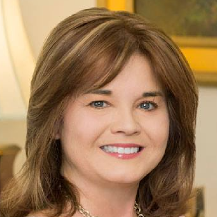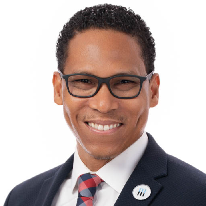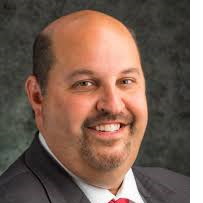What To Do To Get Referrals: Protocol: Behaviors

Response from Linda Loud
from the North Point Team
When I offer a Mary Kay facial, I always explain that I’m not a licensed cosmetologist so by law I’m not allowed to touch my clients. Ours is a teaching approach where I instruct clients to give themselves a facial or makeover using our fabulous products. This also makes sense given that I won’t be in their bathrooms the next day! However, in a couple of cases, I bend that rule. For instance, with Donna who was disabled in a horrible car crash years ago. When showing her something new she gives me permission to apply the products to one side of her face, and then she tries it herself on the other side. And again, with permission, I assisted Maria, who resides in a Memory Care unit but wanted to participate when I did facials as a community service for some of the ladies in an Assisted Living community. In both these cases the individuals had physical limitations but with my help were still able to participate in the fun.

Response from Mrs. Valerie Brutti
If were to ask to represent a seller and a buyer at the same time through dual-agency, I would refer the buyer to another agent. This way I would treat them fairly by giving both of them unbiased representation.

Response from Louis Agudo
from the Roswell 400 Team
I feel we all treat our clients the same, fairly, and equally based on their needs. Some clients need more hand holding than others which requires more of my time. Some clients just want the information, decide on their own, let me know what they want, and I sign them up and yet others may need to be fired as a client and don’t deserve my time, knowledge and services.
The circumstances, questions and needs of my clients dictate the level of communication. There is nothing unequal or unfair about this because it is all relative to their need. They all receive value, which is equal, but my time may be different based on their needs which would be unequal.
Louis Agudo Open Door Insurance
Response from Diana Crawford
I have clients that want to be very involved in their bookkeeping and other clients that are happy as clams when they don’t have to do ANYTHING at all with their bookkeeping. We set our services to provide the level of service our clients want, some want full on do it all for me and some need us to only do a portion, whatever it is, we customize to suit their needs. We let them be brilliant at what they do and we do the rest.
Diana Crawford, CPA
The Accountant’s Office
http://theaoinc.com/

Response from Cathy Logan
A lot of my practice is teaching accounting software. I meet the client where they are…some understand the basics, others are totally clueless.
To treat them fairly I determine their experience and knowledge level
The answers to my questions determine whether I sit side by side or I check with them remotely on their progress.
Response from Jim Tilghman
For a remodel project to end successfully, design decisions must be made before the project starts. Some of clients enjoy picking out tile and grout, paint colors and the like. Others prefer to have someone else, interior designer, make these decisions for them. When dealing with the former I have keep close contact with the client to insure that decisions are made in a timely fashion and don’t cause project delays. When an interior designer is involved they understand the time factor and therefore require less contact from me. Both clients get the same end result, a successful and timely project completion.

Response from Garrett Hurst
I offer different levels of financial planning for my clients depending on where they are in their lives and their financial complexity/needs. For my clients that are on the more complex end of the spectrum (business owners, executives, etc), We tend to meet on more of a monthly basis, especially if they’re going through a period of change in their lives. I meet with the majority of my other clients on a quarterly basis and then those that are much less financially complex (recent college grads, just starting their career) we might only need to meet semi-annually. By meeting my clients where they are and tailoring my planning services to them, everyone gets the level of service they need at that point in their lives, and if/when things change we can adjust the service model accordingly.

Response from Mike Grayeski
Contractors verses our service customers is a good example of the same service but treated differently. Contractors pricing is around 15 to 20 percent less in cost compared to the service consumer. Contractors provide a stream of work adding into 6 figures where the average consumer is not. The service that we provide is the same to both but if you compare the prices, it would be unfair.

Response from Jason Muldrow
from the Peachtree City Team
In marketing, whether I am building their website or managing their digital presence, my clients are more concerned with results rather than time spent. From an equality perspective, the deliverables are the deliverables meaning, if they signed up for me to produce x number of social media posts and ad campaigns per week then equality (and basic business integrity) means I fully deliver what they signed up for every time.
Unequal but fair is in the amount of time it might take me to produce the results. If I am more familiar with one client’s industry, then I might be able to produce all of their content for the month in a few hours. Conversely, a client whose industry I might be less familiar with may take several hours or even days to produce the content.
Although unequal it’s still fair in the sense that both are getting the quality of service they signed up for on-time every time.

Response from Richard Blount II
When we design, build, and maintain websites for our clients, not all clients are the same. Because of that, we don’t limit our clients to a ‘cookie cutter’ product. So when we create their custom websites, we take into account their individual needs and requests. We have some clients that would prefer to just have a website that stakes their place on the web without a desire to attract new clients. They only need it as a place for existing clientele to visit. But other clients we build a website for are more focused on growing their business and want SEO services included in order to rank higher on Google. Both websites are built with the same foundation and expertise, but the second example includes ongoing work in order to provide our client with what they need. That results in a lower cost for the first website, which is fair for what each client needs.

Response from Jessica Smith
Compare two clients and point out one way you treated them differently – unequal – and explain why that was fair to each of them. I treat my clients the same (fair and equal) based on their needs. Some clients require various degrees of hand-holding and reassurance. Some just want the policy and very little consultation.
Two households (married couple with kids) : HH1 listens to my guidance and purchases policies based on recommendations. HH2 disregards recommendations. Both experience similar appointments – discussions of various options. HH1 received more of my attention because they respected my knowledge and valued my guidance. HH2 did not want recommendations just what they thought they needed.

Response from Sheldon Berch
from the East Cobb Team
Beth and Norman are a young married couple who and doing insurance planning. They prefer to meet after “normal work hours” at their home. I am happy to meet at their home. It is important that both are there and make the decisions together. Chris and Lisa are an older couple who only want to meet during the day in my office. The first meeting was with them together. Since the first meeting, only Lisa comes in the office. Chris is okay with her doing the face to face but will call and discuss some of the planning on the phone. I work well with several types of clients: face to face after hours, face to face during the day and those who are okay with talking on the phone.

Response from Steve Perry, EA
Compare two clients and point out one way you treated them differently – unequal – and explain why that was fair to each of them. Client A is fully engaged. He is also confident in the systems in place. He only wants to hear when there is a change in his position. Client B is terrified. An IRS letter means the end of the world. He believes the stories about the IRS throwing them in the street. I talk to Client B at least weekly, sometimes daily. He needs constant reassurance until we get resolution. I talk to Client A when the situation warrants it. This is fair because it gives each client the comfort level they need to complete the engagement.

Response from Jonathan Lyons NMLS# 1470040
from the Brookhaven Team
Underwriting guidelines in the mortgage industry are meant to be applied fairly to all clients. An example where they would be different would be when two equally qualified borrowers with the same credit scores, debt-to-income, available assets and job stability want to buy the same home yet one wants the property for their primary residence and the other wants the property for investment. The pricing would be different as well as the required minimum down payment for each client based on the intended use of the property.

Response from Steve Byndloss
I have two clients, both are municipalities for local city government’s. There are a host of services they provide to their constituencies. Education, Police and Fire Protection, Public Utilities, and Transportation just to name a few. Base on these services they are just alike or equal.
When we help municipalities deploy Cybersecurity Strategy there will be differences base on their (Risk Appetite) i.e. the amount of risk an organization is willing to take in conducting business. Or their (Risk Tolerance) i.e. The maximum risk a company is willing to take in conducting business. Each item is measure on a scale of high or low. This will be unique for each municipality as an example of how they are different, or unequal.

Response from Melody Swilling
My uncontested divorce clients usually have discussed the majority of the terms of their settlement and often just need insight on a few or less spots, so they need less input from me directly and can work closer with my team to streamline their process.
Contested cases often have more urgent needs and less insight into the solutions when they start, requiring more guidance, drafting, court appearances, and general input from me and my associate directly over a longer period of time.
Both types of clients get the value they need, but the work done is not equal.
Melody Swilling (Family Law Attorney)
Swilling Family Law Firm, LLC
http://www.swillingfamilylaw.com
